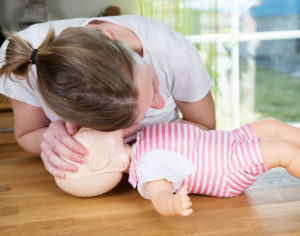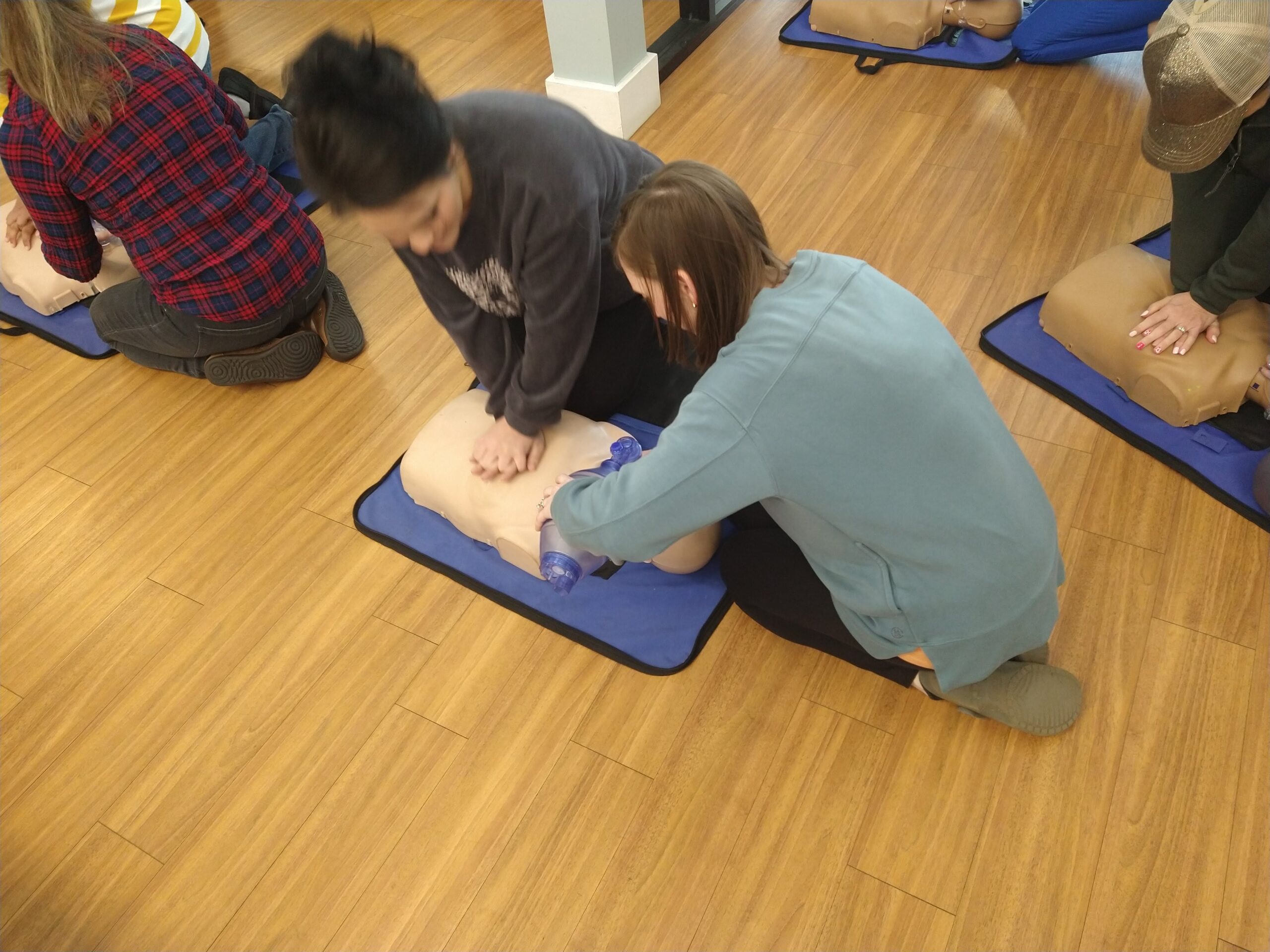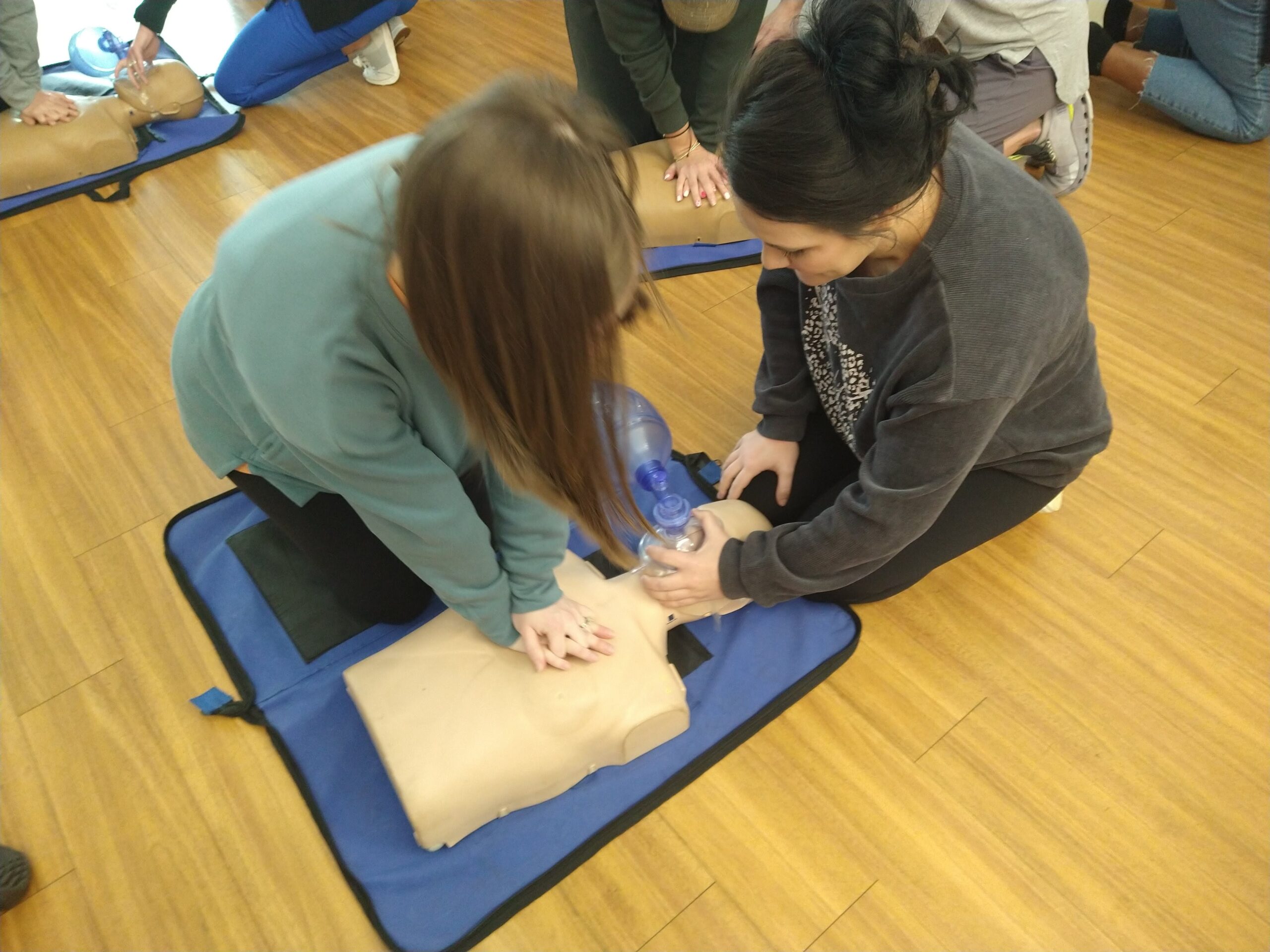Every parent should know how and when to administer CPR. When performed correctly, CPR can save a child’s life by restoring blood flow to the heart, brain, and other organs and restoring breathing until advanced life support can be given by health care providers.
About CPR
CPR (or cardiopulmonary resuscitation) is a combination of chest compressions and rescue breathing (mouth-to-mouth resuscitation). If someone isn’t circulating blood or breathing adequately, CPR can restore circulation of oxygen-rich blood to the brain. Without oxygen, permanent brain damage or death can happen in less than 8 minutes.
CPR might be necessary in many different emergencies, including accidents, near-drowning, suffocation, poisoning, smoke inhalation, electrocution injuries, and suspected sudden infant death syndrome (SIDS).
Reading about CPR and learning when it’s needed will give you a basic understanding of the concept and procedure, but it’s strongly recommended that you learn the details of how to perform CPR by taking a course. If CPR is needed, using the correct technique will give someone the best chance of survival.CPR is most successful when started as quickly as possible, but you must first determine if it’s necessary. It should only be performed when a person isn’t breathing or circulating blood adequately.
First, determine that it’s safe to approach the person in trouble. For instance, if someone was injured in an accident on a busy highway, you’d have to be extremely careful about ongoing traffic as you try to help. Or if someone touched an exposed wire and was electrocuted, you’d have to be certain that he or she is no longer in contact with electricity before offering assistance to prevent becoming electrocuted yourself. (For instance, turn off the source of electricity, such as a light switch or a circuit breaker.)
Once you know that you can safely approach someone who needs help, quickly evaluate whether the person is responsive. Look for things such as eye opening, sounds from the mouth, chest movement, or other signs of life such as movement of the arms and legs.
In infants and younger kids, rubbing the chest (over the breastbone) can help determine if there is any level of responsiveness. In older kids and adults, this also can be done by gently tapping the shoulders and asking if they’re all right.
Whenever CPR is needed, remember to call for emergency medical assistance. Current CPR courses teach you that if you are alone with an unresponsive infant or child, you should perform CPR for about 2 minutes before calling for help.
Three Parts of CPR
The three basic parts of CPR are easily remembered as “CAB”: C for compressions, A for airway, and B for breathing.
C is for compressions. Chest compressions can help improve the flow of blood to the heart, brain, and other organs. CPR begins with 30 chest compressions, followed by two rescue breaths. This cycle is immediately repeated and continued until the child recovers or help arrives. It is not necessary to check for signs of circulation to perform this technique.
According to the American Heart Association (AHA), rescuers doing compressions should “push hard, fast, and in the center of the chest.” A CPR course will teach you how to perform chest compressions in infants, kids, and adults, and how to coordinate the compressions with rescue breathing.
A is for airway. After 30 compressions have been completed, the victim’s airway must be open for breathing to be restored. The airway may be blocked by the tongue when someone loses consciousness or may be obstructed by food or another foreign object.
In a CPR course, participants learn how to open the airway and position the person so the airway is ready for rescue breathing. The course will include what to do to clear the airway if you believe an infant or child has choked and the airway is blocked.
B is for breathing. Rescue breathing is begun after 30 compressions have been completed and the airway is open. Someone performing rescue breathing essentially breathes for the victim by forcing air into the lungs. This procedure includes breathing into the victim’s mouth at correct intervals and checking for signs of life.
A CPR course will review correct techniques and procedures for rescuers to position themselves to give mouth-to-mouth resuscitation to infants, kids, and adults.Taking a CPR Course
Nearby hospitals and your local chapters of the AHA and the American Red Cross are good resources for finding a CPR course in your area.
Qualified instructors may use videos, printed materials, and demonstrations on mannequins representing infants, kids, and adults to teach proper techniques for performing CPR.
The AHA offers many levels of CPR courses. A basic course that includes CPR lasts several hours and takes place within one session. It covers adult, child, and infant CPR and choking. Participants practice the techniques on mannequins and can ask questions and get individualized instruction.
Because CPR is a skill that must be practiced, it’s wise to repeat the course at least every 2 years to maintain your skills. Doing so also allows you to learn about any new advances or discoveries in CPR techniques.
Remember, taking a CPR course could help you save your child’s — or someone else’s — life someday.





